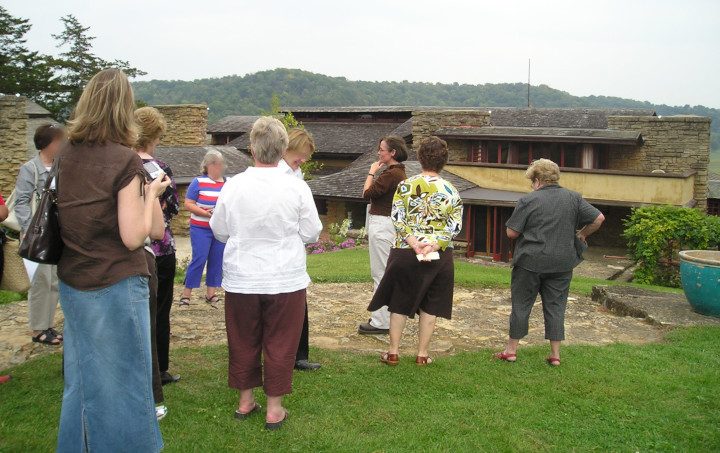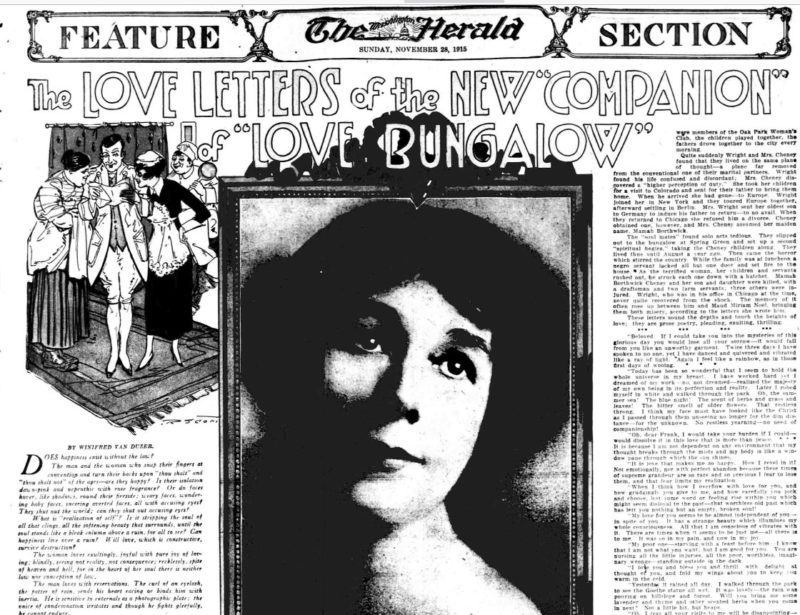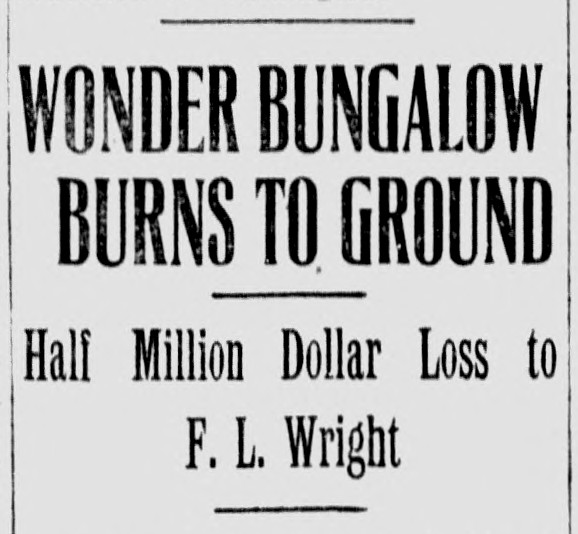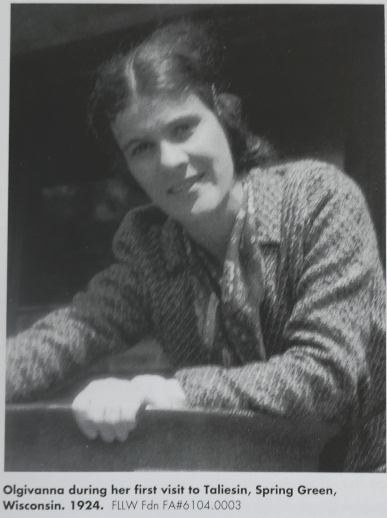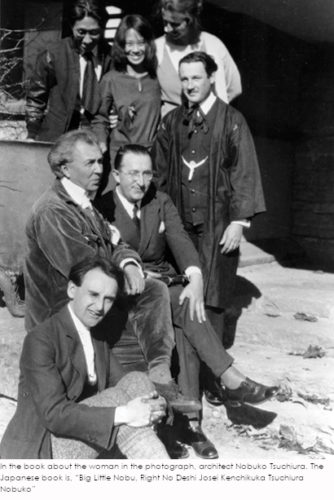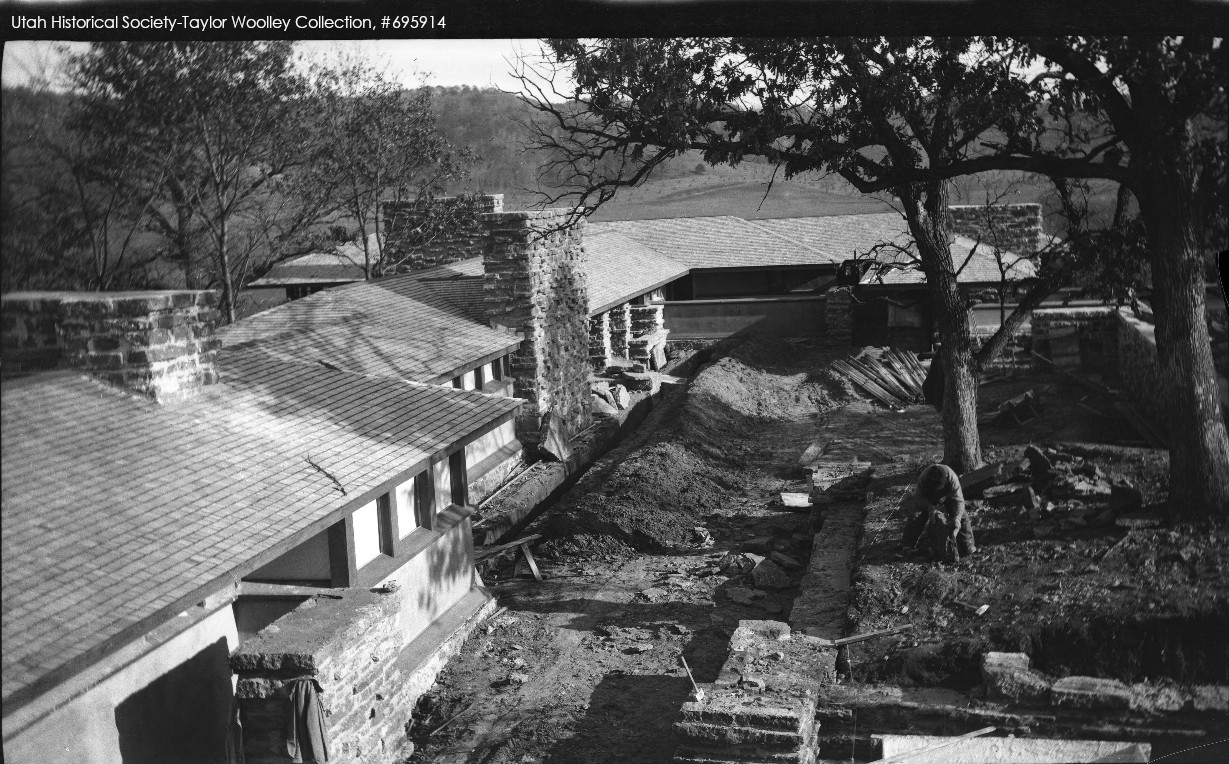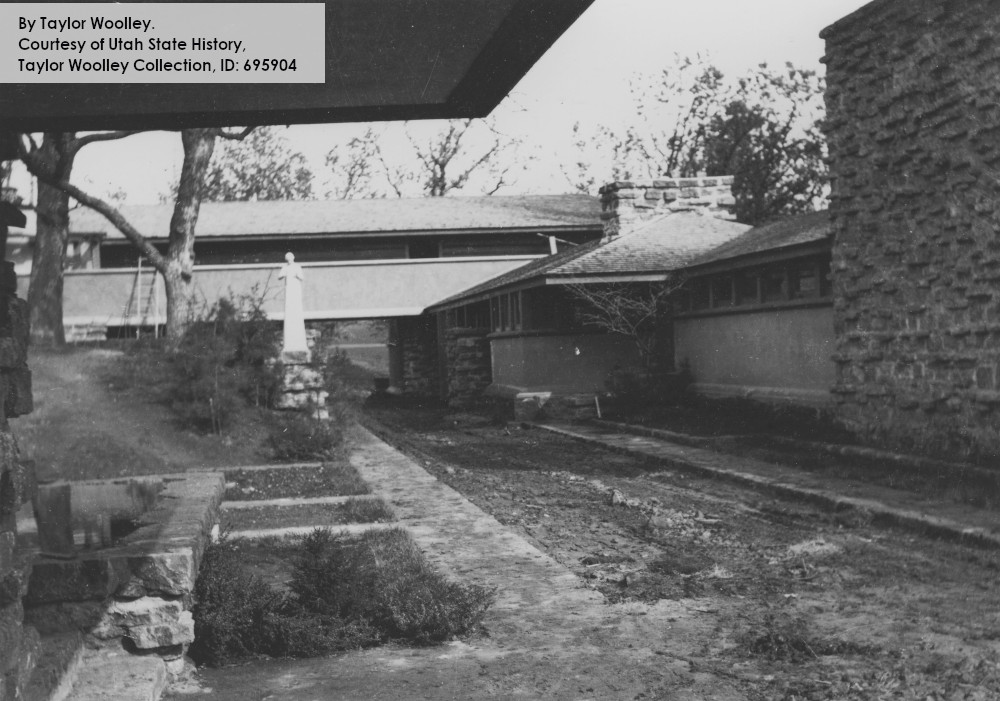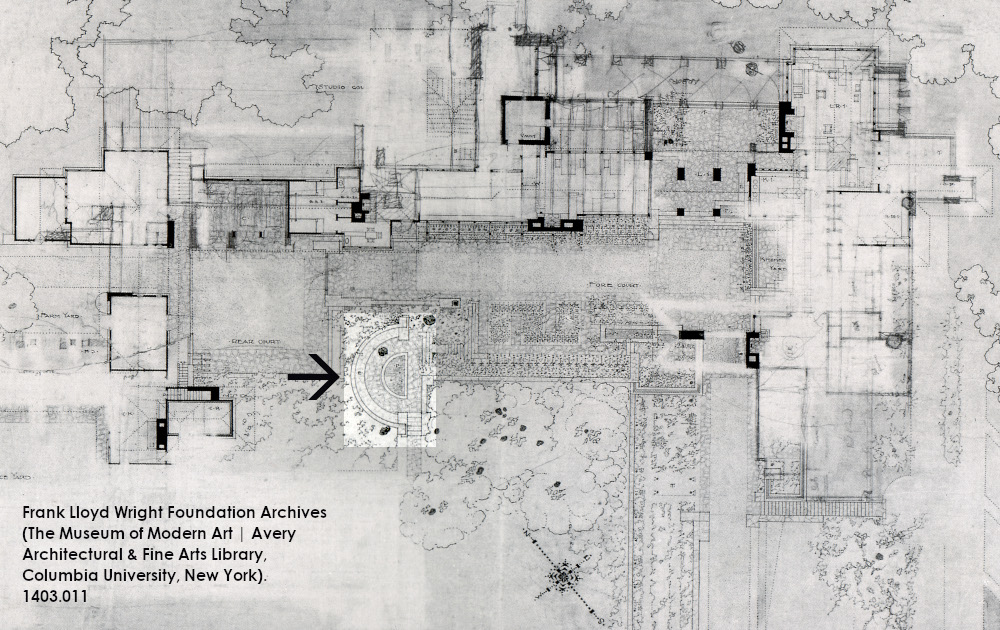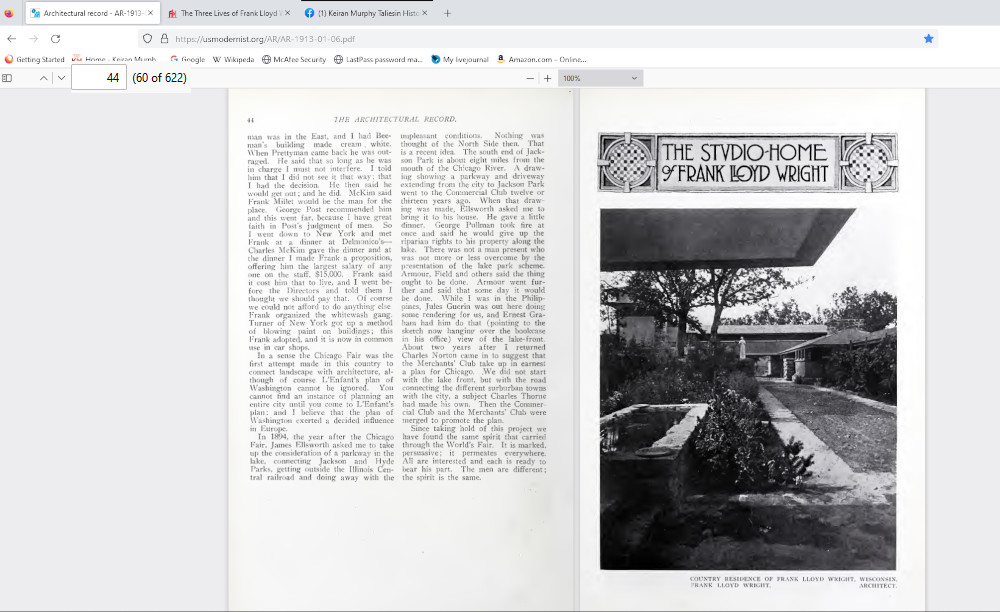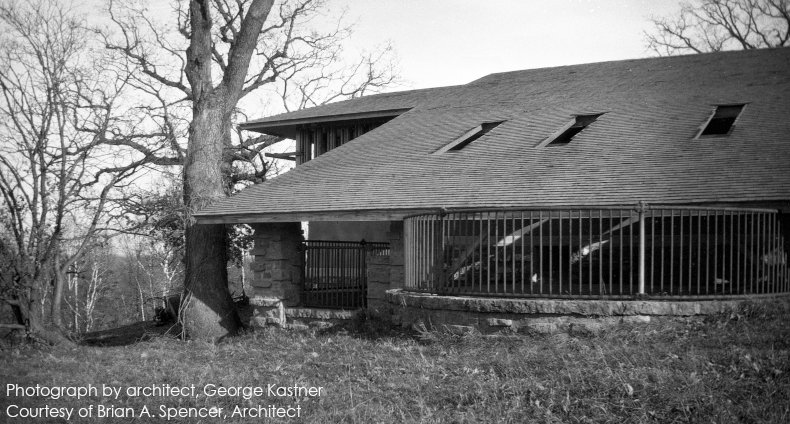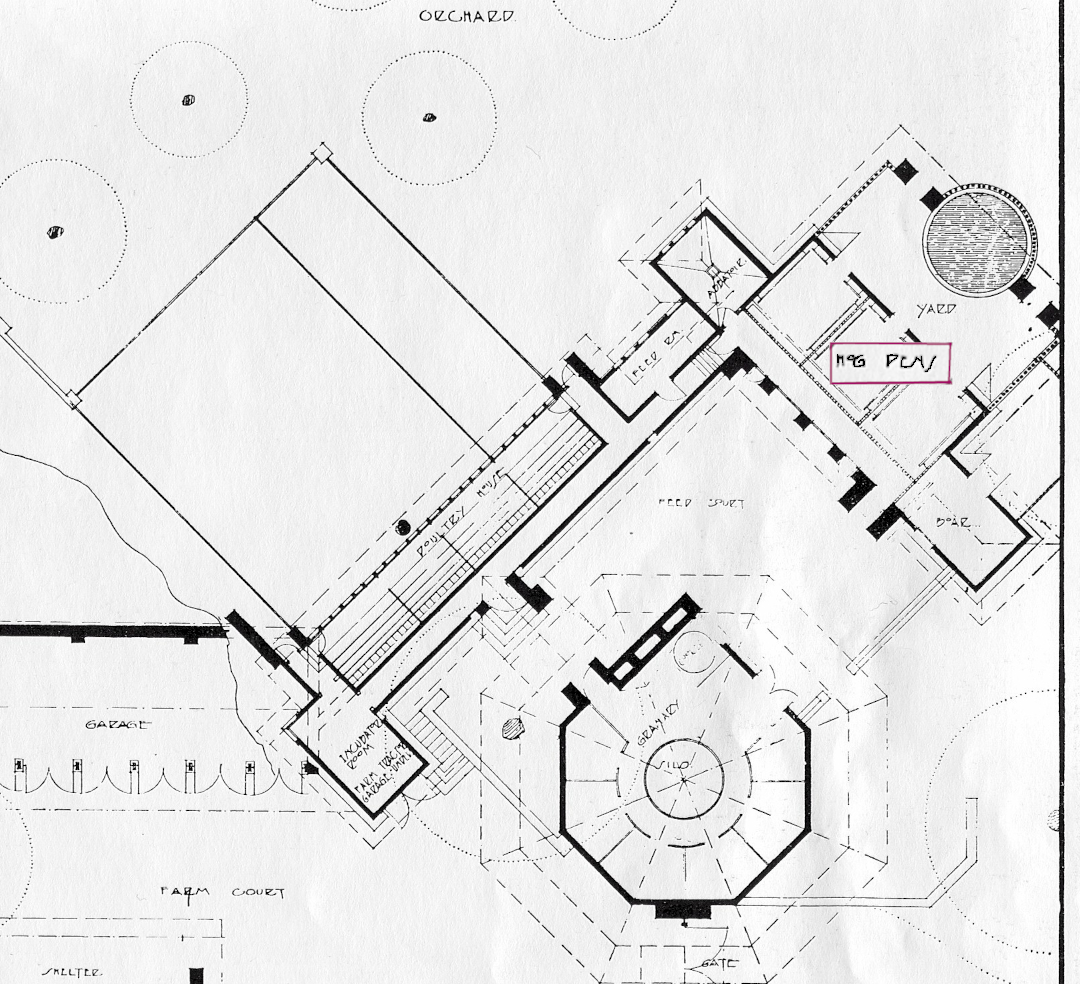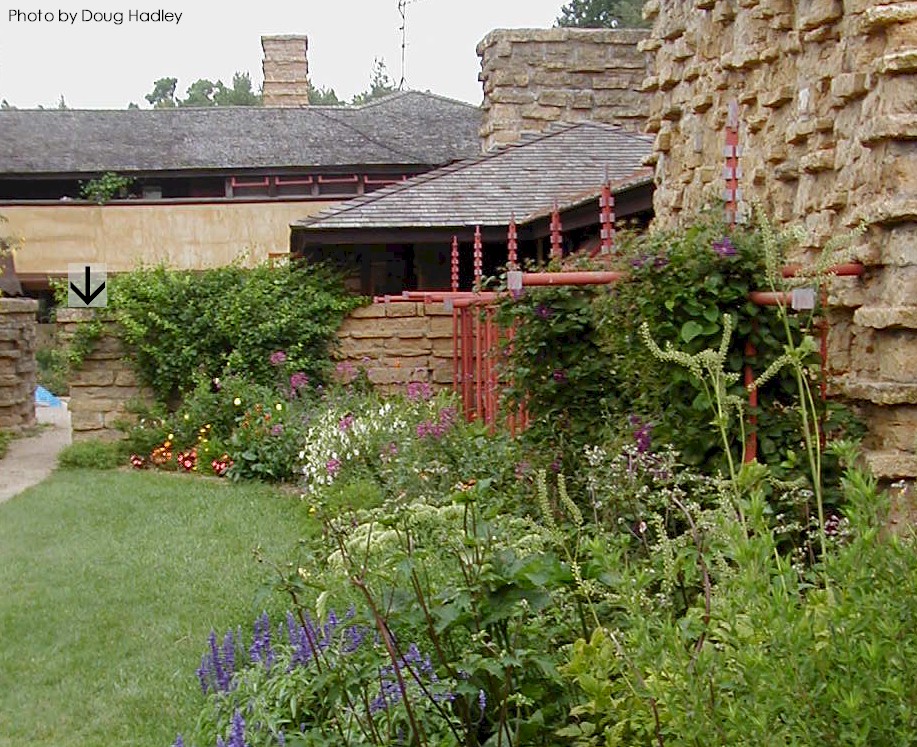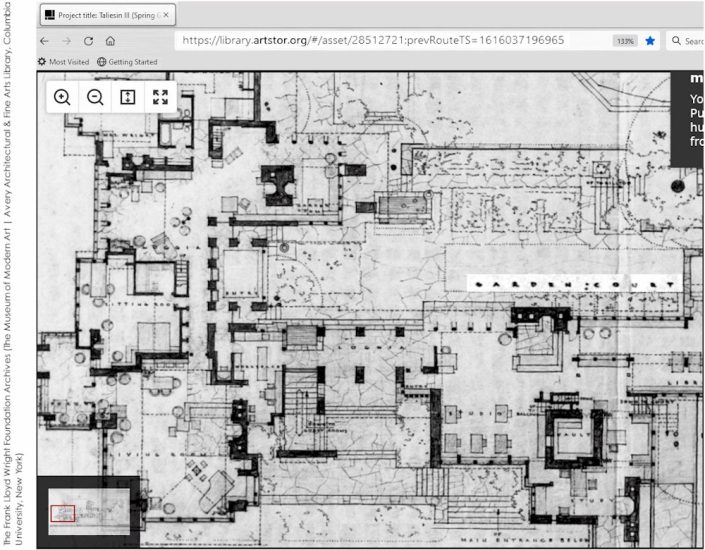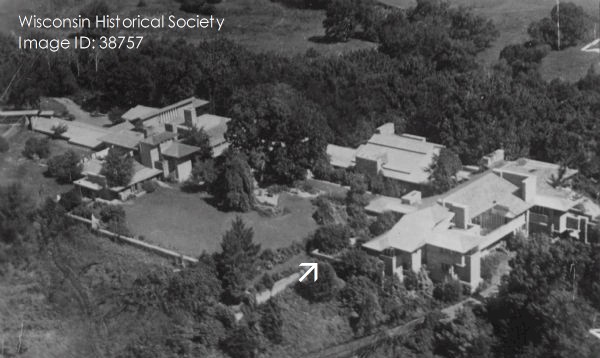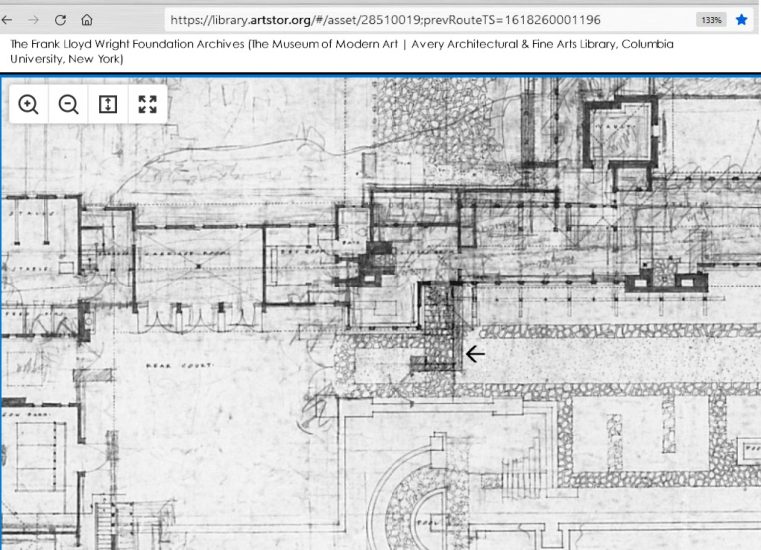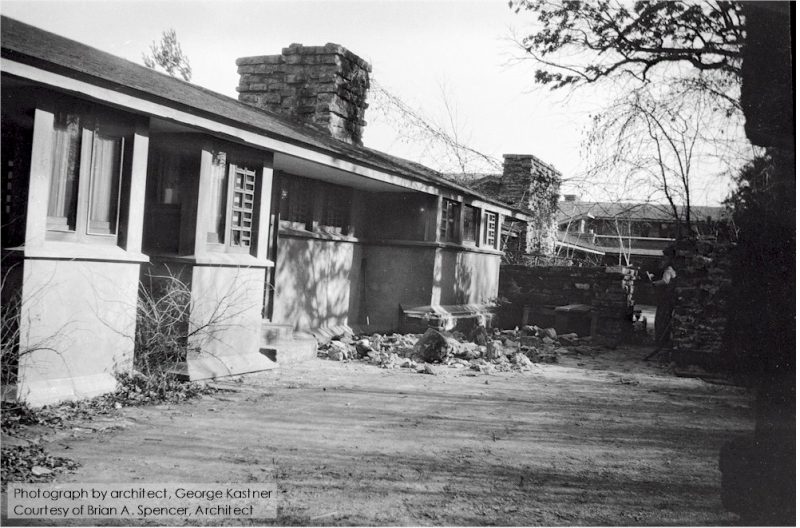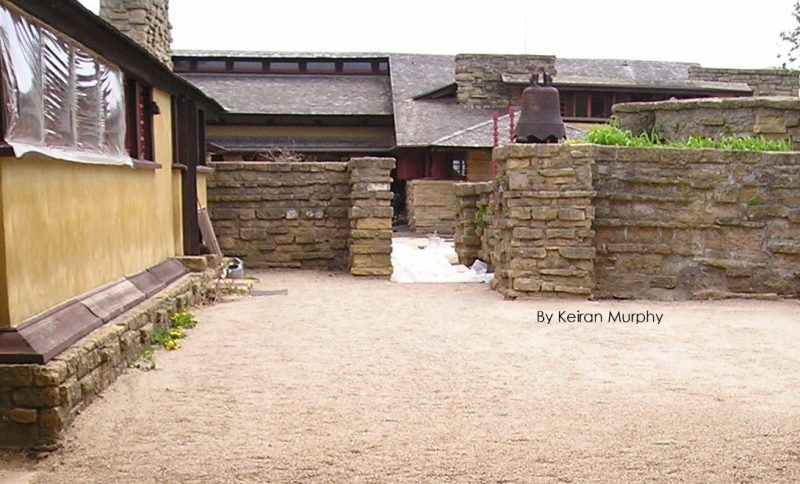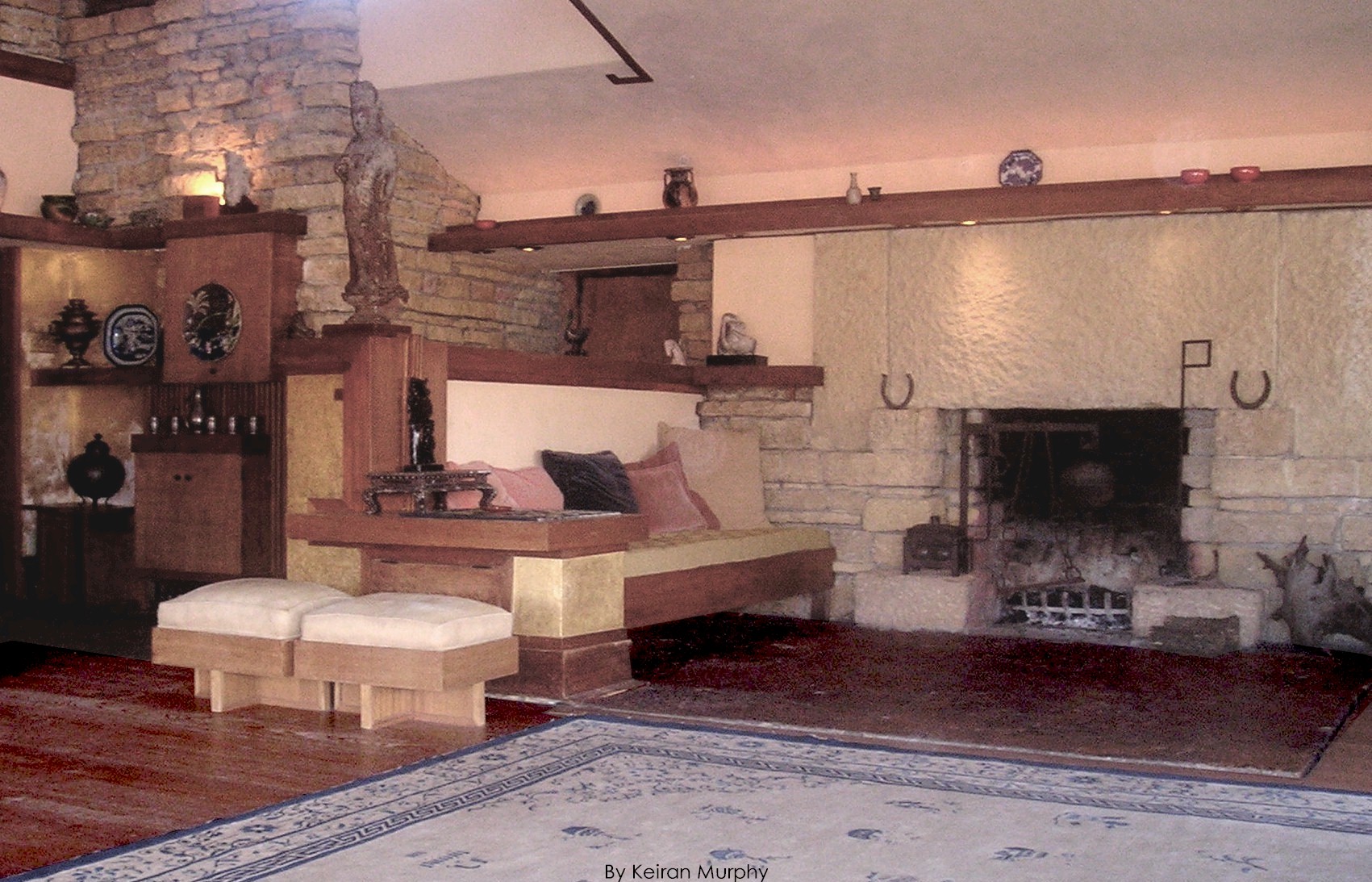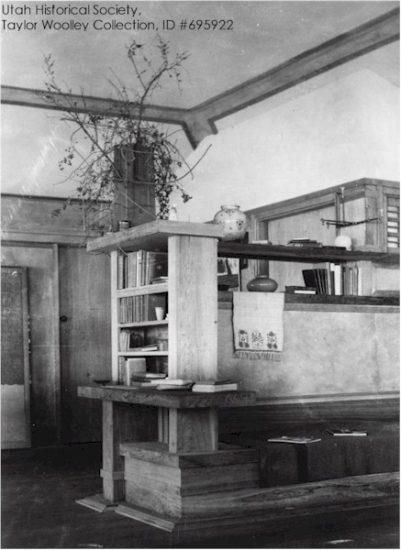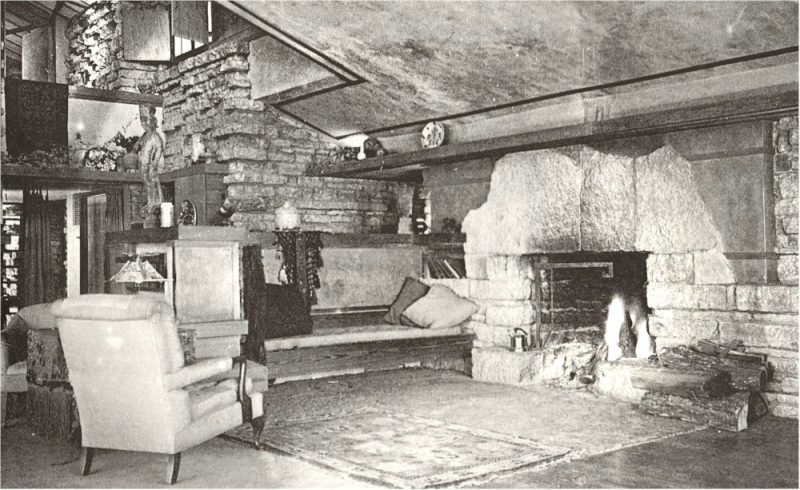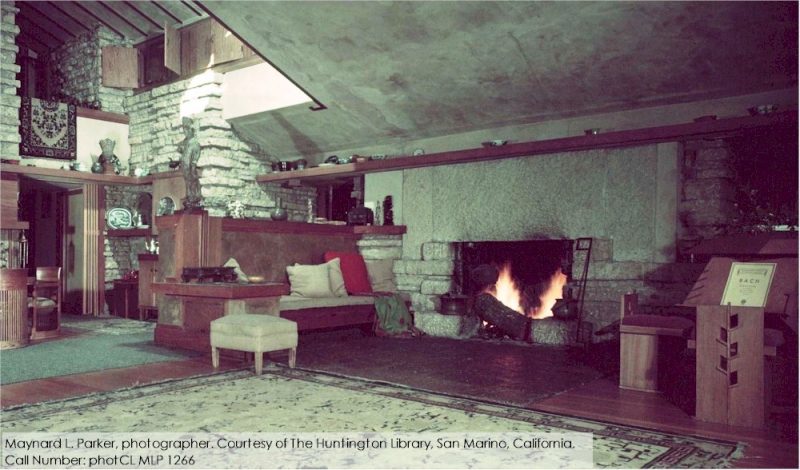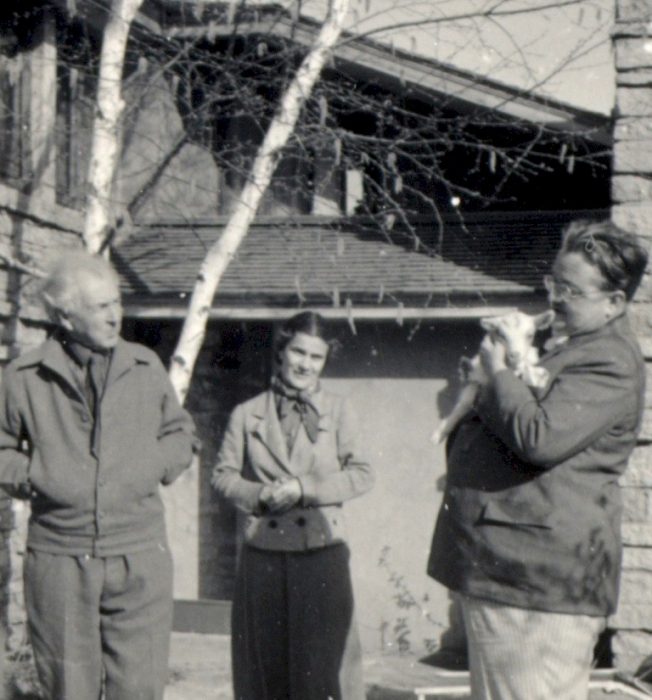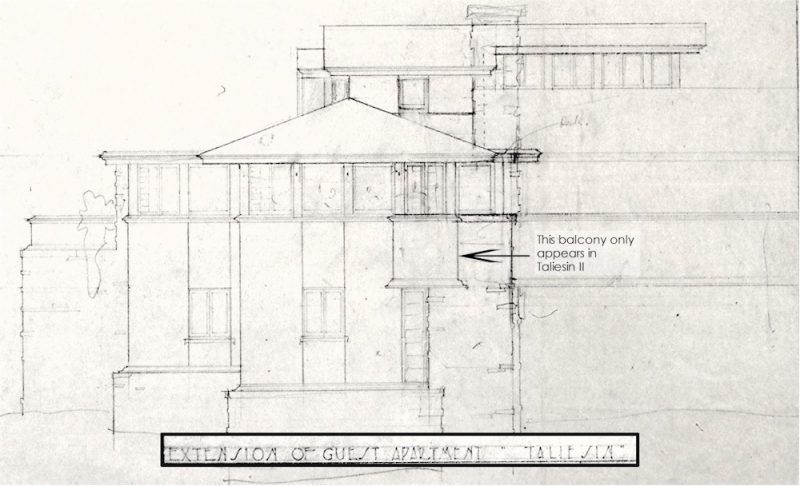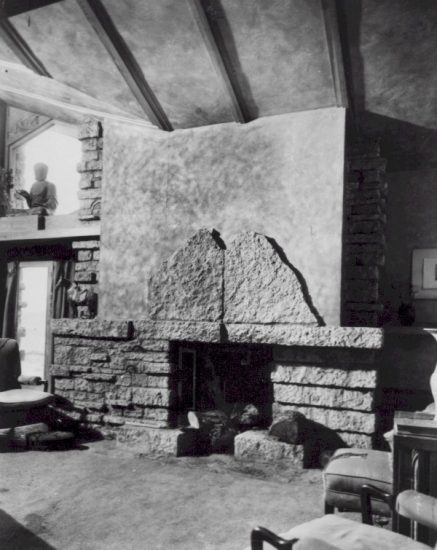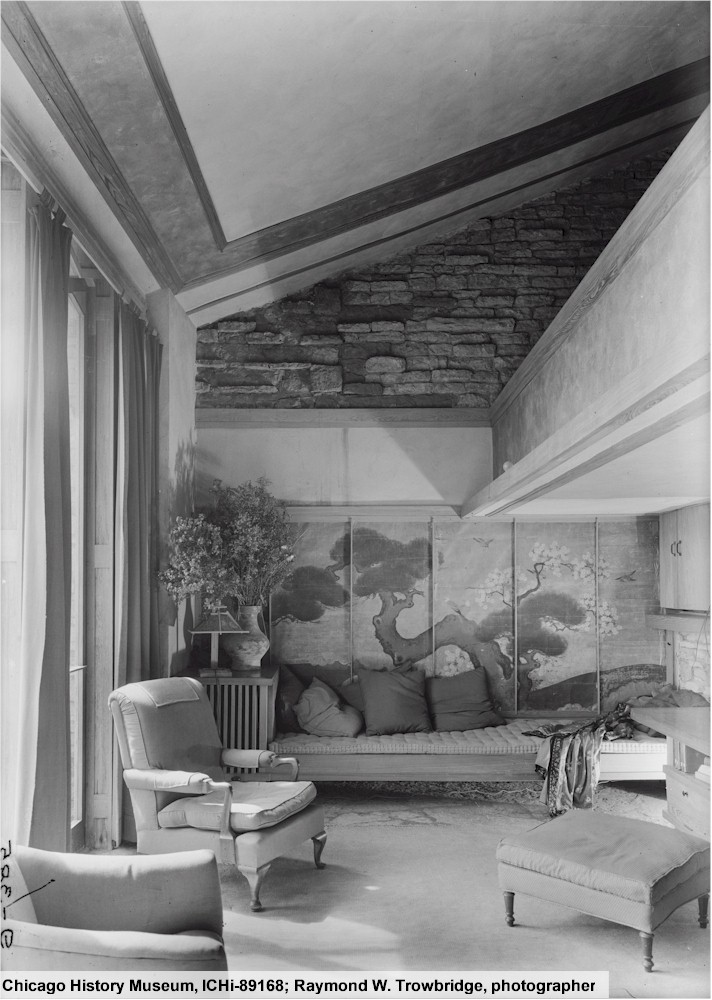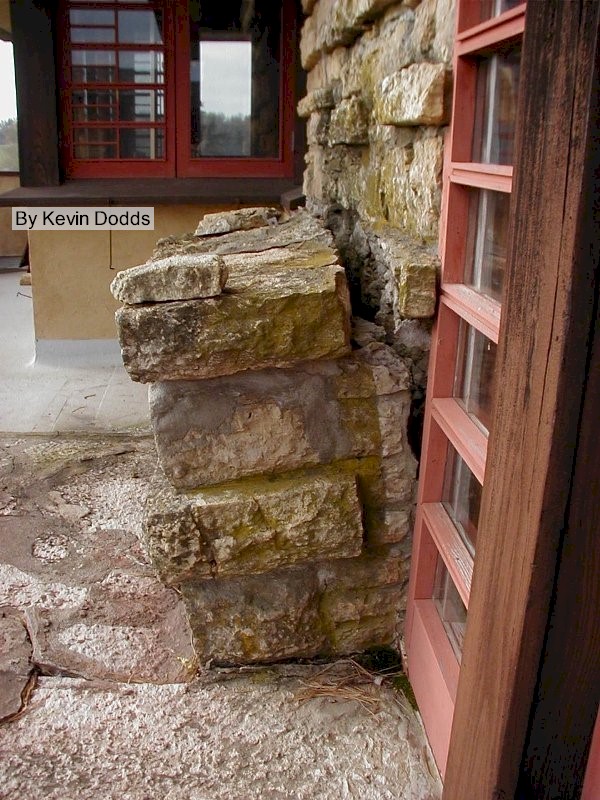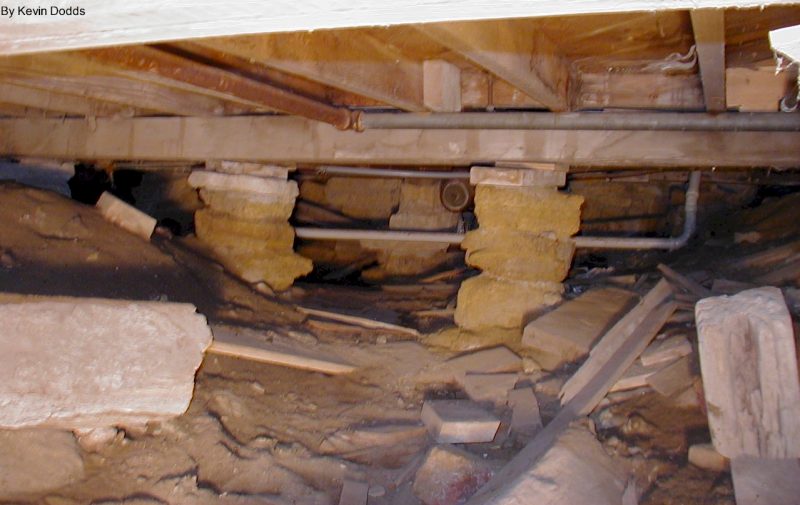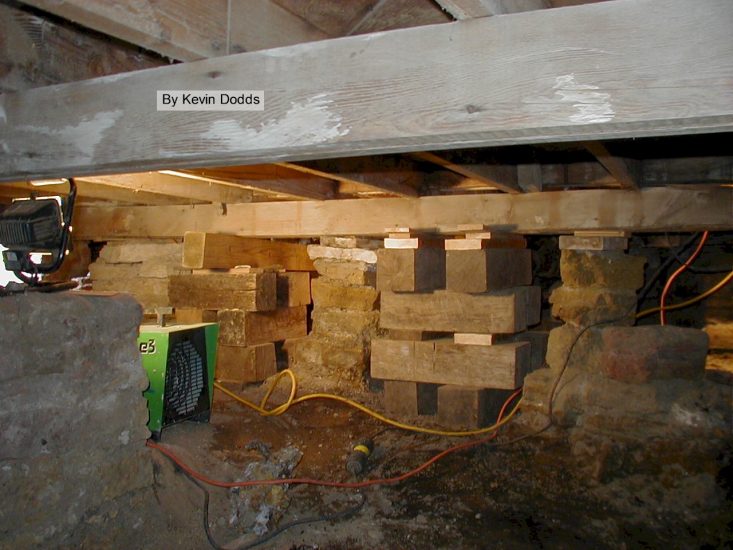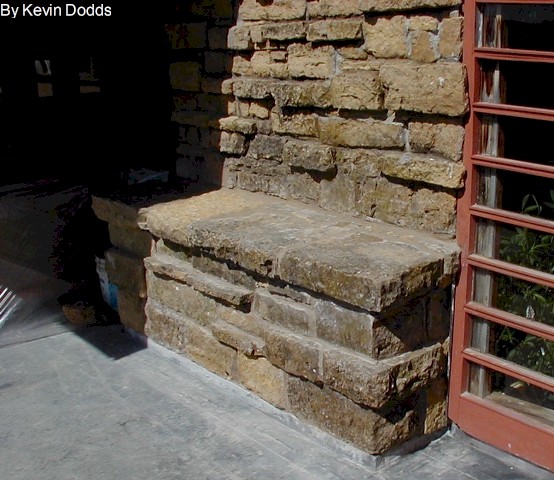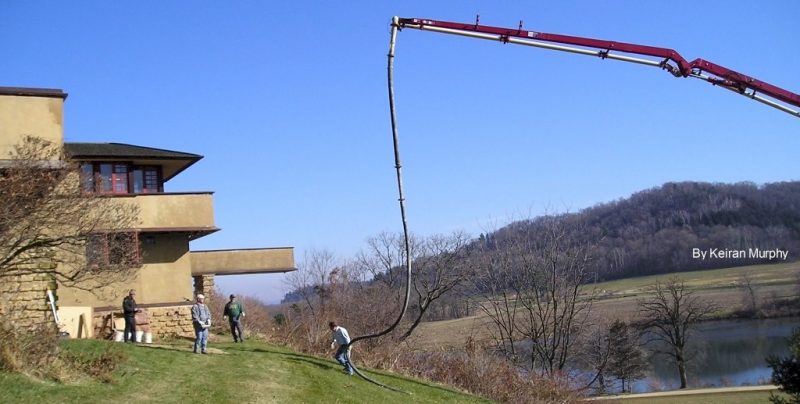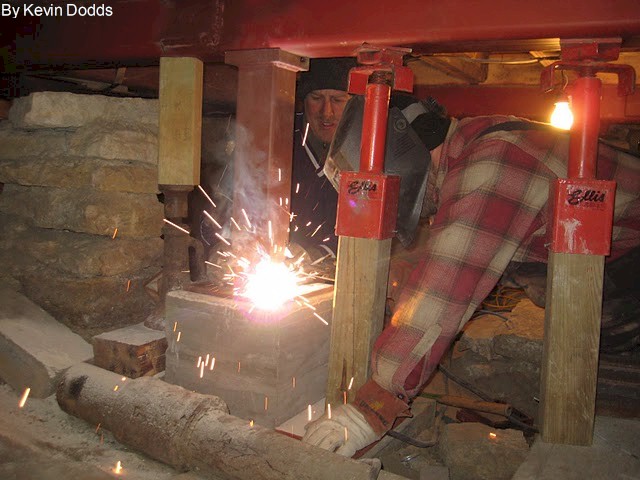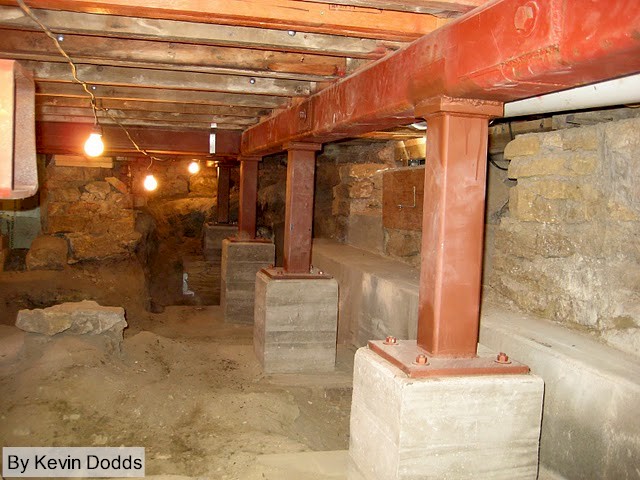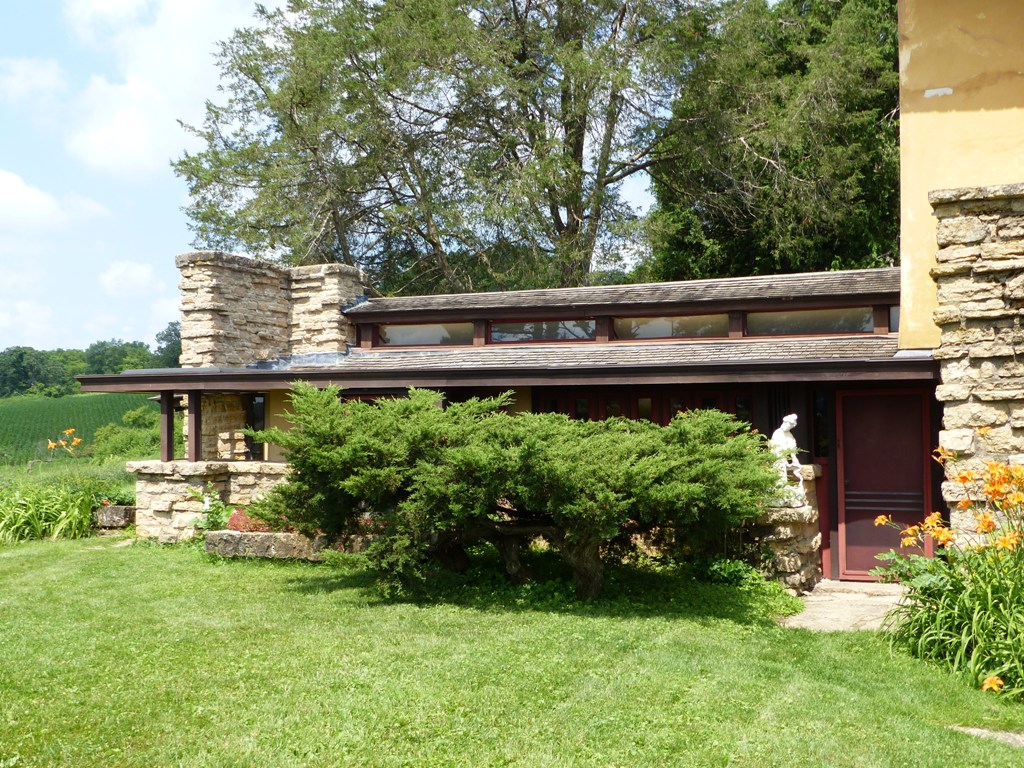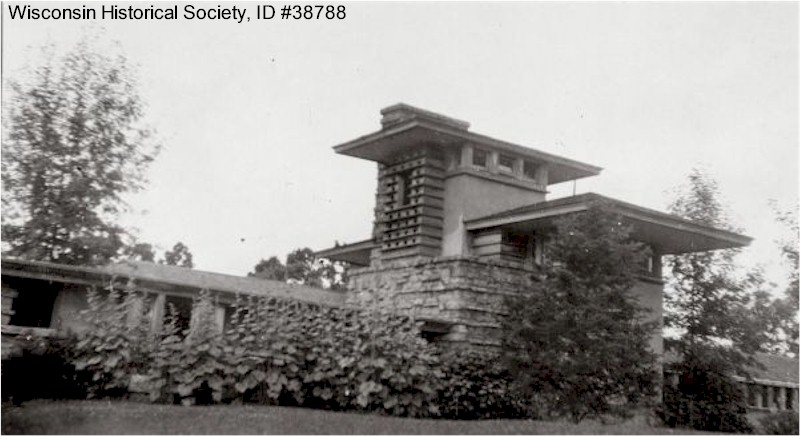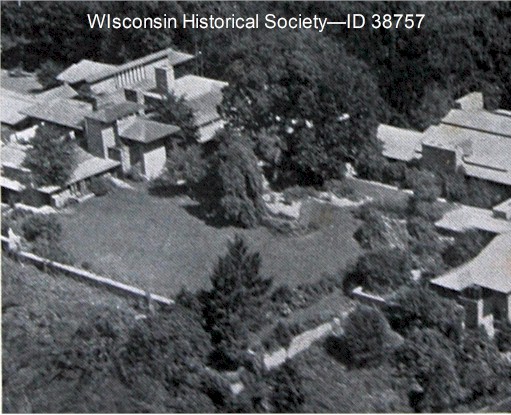A photo of me on Taliesin’s Hill Crown while giving the Loving Frank Tour in 2008. I’m wearing white pants.
When people on tours would ask me how long I’d worked there, sometimes I’d say, “Since I dyed my hair for fun instead of covering up the gray.” I was definitely covering up the gray in the photo above.
I stopped dyeing my hair in 2015. So I was doing it before it was cool!1
For years, as a tour guide, I was part of the public face of Taliesin Preservation. It was important to me to try to explain to people why the hell giving us their money was worth it. And I felt I had to be worthy of the trust that visitors put in me.
So, my post today is going to be about the trust I endeavored to earn as a tour guide.
On tour
Giving a tour meant that I brought people through the spaces, explained what the spaces were, hopefully gave them time to enjoy them, then move them through (without cutting their times short by any of my timing mistakes). Then got them back to the shuttle bus on time, and to the Visitor Center so the next tour left on time.
I called guides who were really bad on timing “chronometrically challenged”.
I came up with that term while my timing was impeccable. I know former guides and staff don’t believe me, but I was practically flawless in the ’90s.
in my defense,
two more rooms were later opened to tours inside Taliesin. So, really, 7-10 minutes had to be carved out someplace else.
At the same time,
I had to make sure that
- people didn’t walk away while on their cellphones,
- smoke cigarettes,2
- go into any of the apartments or dormitory rooms (which are private);
- walk down into the Guest Wing of the House (the first floor),
- if you really need to see the Guest Wing, watch Kyle Dockery of the Frank Lloyd Wright Foundation give a virtual tour of it in 2020 on their Facebook page.
- hit their heads,
- sit on drafting stools that are over 100 years old,
- go into the silos at Midway Barn,
- or stand in the path of an oncoming car owned by a Taliesin resident.
- more people lived on the Taliesin estate before the Covid-19 pandemic; but the Taliesin shuttle bus is still zooming around.
In addition, I wanted people to have confidence on where I was taking them. And I wanted them to be carried along without worrying about the time.
Someone told me once that the 4-hour Estate Tour with me didn’t feel like it was 4 hours long, so I keep that happy memory.
And also, as guides we directed people’s attention to certain places so that they wouldn’t go where they shouldn’t.
For example,
If you told people to stay away from the parapet at the edge of the Lower Court
(because the wall is too low)
people seemed to walk to the edge of the parapet that you just told them to stay away from.
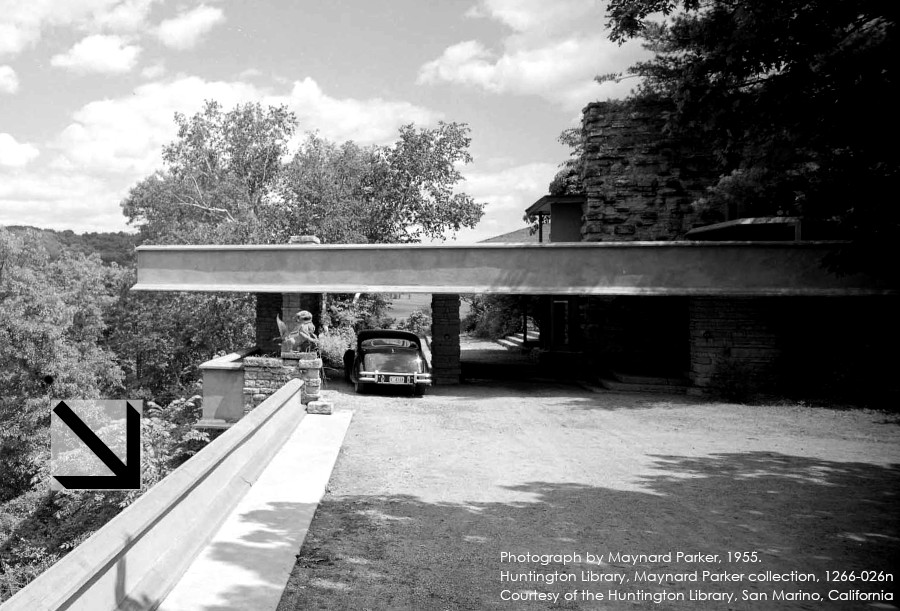
Maynard Parker took this photo on Taliesin’s Lower Parking Court in 1955. I added the arrow to point out the parapet.
The Preservation Crew made changes on the edge to create positive pitch. So, if I backed up to the parapet, I would be able to sit on it. I’m not that tall so the height could be dangerous for someone much taller than me.
The best way
I controlled the movement of folks on tour was by sweeping my hand back to the building. This encouraged people to look at the building and stop walking to the wall.
One of my photographs showing the building is below. You’ll have to imagine me sweeping my arm:
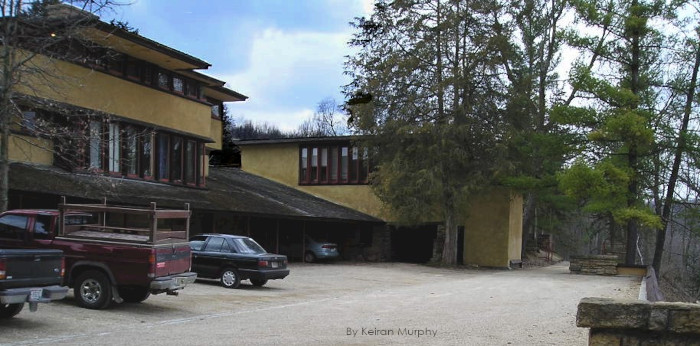
This photograph is on the Lower Court. Apprentice Louis Davidson Gottlieb took a photo looking in the same direction and published it in her book, A Way of Life: An Apprenticeship with Frank Lloyd Wright. I posted her photo in my post, “How I became the historian for Taliesin“.
Still, you don’t have complete control
In some cases, a person comes in with their own interpretation of the site, or the staff.
You just never know.
I read a blog post last year by a woman from Great Britain who was completely put off about the lack of bathrooms on a Taliesin tour. Her inability to deal with the lack of common bathrooms formed the major part of her post. I wondered: was it really that bad, or was this her interpretation?3
Another case in point:
Talking about the murders that took place at Taliesin in 1914:
For years I did not talk about the cause of the deaths in the 1914 Taliesin fire without being asked.
It’s not that I want to ignore that it happened. I really didn’t know how to talk about them (and I still don’t). Because it’s like, “Taliesin – so amazing and incredible and beautiful and full of delights! It’s on UNESCO‘s World Heritage list!…” … And then, you know: axe murders.
Truly, my own reaction on first hearing about them was like, “WHAT?!” A woman’s head nearly “cleft in two”. A child murdered where he sat and incinerated.
I didn’t want anyone to find themselves on a tour at Taliesin and hearing me talk about this when they had no idea ahead of time.
Plus,
there’s the erroneous “Julian killed them when they jumped out of the one window” story.
Still: it did happen. You can’t talk about Taliesin and NOT talk about fires.
So,
in my early years of tour guiding, I phrased it as, “as a result of the events surrounding the fire, Mamah and six other people would die.”
After that,
I would talk about Taliesin’s second fire. Consequently, someone on the tour would often ask what caused the fires. Therefore, I could prepare people for what they would hear. I felt this was an organic approach that wouldn’t stun people.
But, then in 1998,
Ken Burns released his Frank Lloyd Wright documentary.
When I gave my first House tour the following May, I gave my standard line of “as a result…”
someone said,
“that’s not all that happened.”
I said, “Oh, yes, the first fire was set by a servant….” But inside I was like, “OH… CR…ud.”
I realized that if more people now knew about the 1914 murders, they would figure I was lying to them if I didn’t address it immediately.
So I actively brought that information in.
Then,
there was the bigger deal as of 2007. That’s when the book Loving Frank came out.
sorry that Nancy beat you Ken, but that’s the way it goes
So eventually I found the best time to talk was in the first major courtyard at Taliesin.4
State it quickly, with no overt gore…
well, you do have to say “ax” (or “hatchet”), but you don’t give details.
Personally,
what made this more important to me was maintaining the trust of those on my tours.
Trust
IMO is an intrinsic part of the bargain. If I do not answer truthfully, why should anyone, who was paying the organization that runs tours, place further trust in me?
In the end, the only way I could do it for years was to stick to being honest and give what I could. I think that helped me to not obsess about everything I said incorrectly, or what I forgot, or… etc., etc.
I have to turn my brain off; otherwise I’d never get to sleep at night.
First published July 24, 2023.
The photograph was taken by someone from Taliesin Preservation while I was leading the first Loving Frank tour. That was a special event with author, Nancy Horan.
Notes
1. actually a friend in college started going gray by the time she was 19 and she never dyed her hair. So, Lauren was way cooler than all of us.
2. I don’t know if that’s such a problem today. I recall giving group tours to people from Germany and Japan (not at the same time) and they were confused because they couldn’t smoke cigarettes on the estate. My memory comes from before the turn of the twentieth century for goodness sakes.
3. And, yes, they take people to the bathrooms if they ask (plus, there’s a bathroom break on the 4-hour Estate Tour). But we didn’t tell people, because when you mention bathrooms, everyone’s going to go, “oh, yeah: I should use one now.” Which you can do when you have 2 people on your tour as opposed to 21, or 25. By the way: most of the bathrooms on the Taliesin estate were not designed by Frank Lloyd Wright. He had bathrooms where most of them are today, but they were changed and modified over the years. Truth is, for the most part we don’t know what the bathrooms looked like when Wright was alive. He didn’t leave detailed plans.
4. I don’t talk about the murders on this video of me at Taliesin over on Taliesin Preservation’s website. But I can’t remember if I talked about it in 2009 while doing the video and if that was just cut out. Or if we decided it wasn’t best to bring up the murders in a video.

